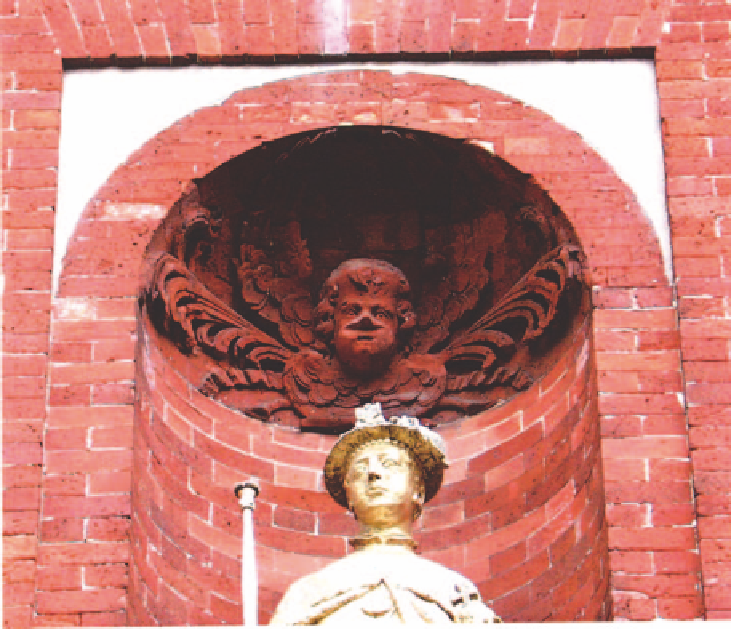Agriculture Reference
In-Depth Information
Figure 112
Carved niche hood of
horizontally laid gauged
work, Christ's Hospital
School, Horsham (West
Sussex),
c
.1672. Moved
from its original site in
London and re-erected
in 1901. (Courtesy of
Mark Haskell)
hot or cold 'cement' (see Chapter 3). Later in this period, however, a white
lead and shellac matrix was beginning to be used as well, both facilitating close
and unbreakable jointing. If desired, by mixing dust from the rubbers being
cut for laying in these 'cements', the joints could also be effectively 'blinded-
out' so reducing visual disruption to the appearance of the carved hood.
Despite the fact that the joints were so finely set and possibly 'blinded-out',
the bonding of these lumps still called for considerable forethought and inge-
nuity on the part of the craftsmen to avoid exposure of the vertical cross-joints
where carved back. The carving of the hood, and indeed all gauged enrich-
ments, was essentially the preserve of the 'trade carver'. The trade carver was
a most prestigious artisan and high-skilled craftsman with whom the virtuoso
bricklayer enhanced many an ambitious façade. The carving was executed with
soft stone tools and a wood mallet. These tools comprised chisels, gauges, files,
drills, conduits, of a variety of materials and shapes, including bespoke-made
tools to suit certain situations, as these bricks were delightfully easy to work.
A dried-out plant called 'Dutch Rush' was still used extensively during this
period until the advent of modern sandpapers, for abrading surfaces. Also
known as 'Shave Grass', 'Pewterwort', or 'Scourwort', it is a primordial plant that
grows in sandy soil. Feeding through its root system, it draws up silica in nutrient

